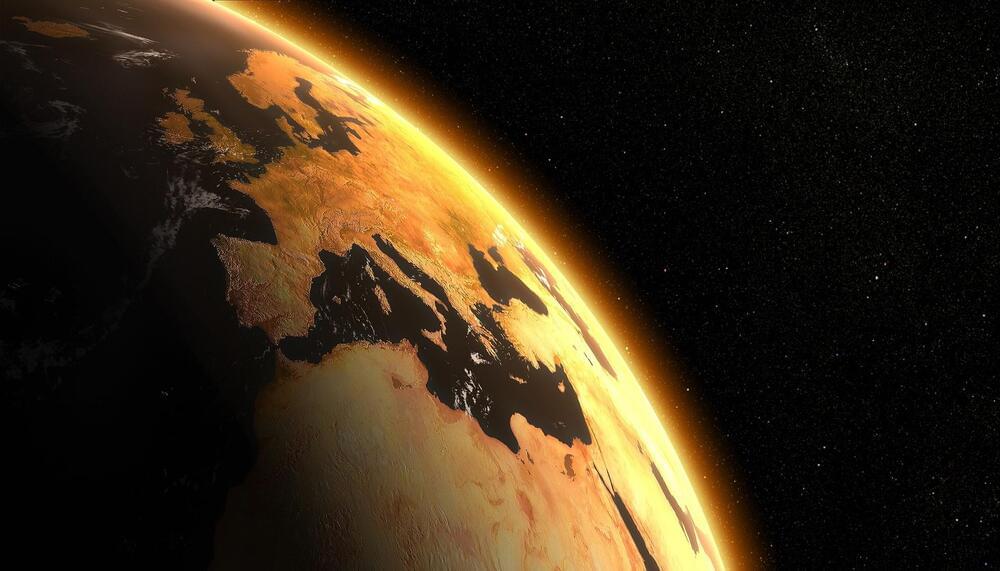Nov 7, 2022
How a sand battery could transform clean energy
Posted by Quinn Sena in categories: energy, sustainability
A new way of storing renewable energy is providing clean heat through the long Nordic nights.
A new way of storing renewable energy is providing clean heat through the long Nordic nights.
Contact electrification (CE) was humanity’s earliest and sole source of electricity until about the 18th century, but its real nature remains a mystery. Today, it is regarded as a critical component of technologies such as laser printers, LCD production processes, electrostatic painting, plastic separation for recycling, and more, as well as a major industrial hazard (damage to electronic systems, explosions in coal mines, fires in chemical plants) due to the electrostatic discharges (ESD) that accompany CE. A 2008 study published in Nature found that in a vacuum, ESDs of a simple adhesive tape are so powerful that they generate enough X-rays to take an X-ray image of a finger.
For a long time, it was believed that two contacting/sliding materials charge in opposing and uniform directions. However, after CE, it was discovered that each of the separated surfaces carries both (+) and (-) charges. The formation of so-called charge mosaics was attributed to experiment irreproducibility, inherent inhomogeneities of contacting materials, or the general “stochastic nature” of CE.

Solar cells that are stretchable, flexible and wearable won the day and the best poster award from a pool of 215 at Research Expo 2016 April 14 at the University of California San Diego. The winning nanoengineering researchers aim to manufacture small, flexible devices that can power watches, LEDs and wearable sensors. The ultimate goal is to design and build much bigger flexible solar cells that could be used as power sources and shelter in natural disasters and other emergencies.
Research Expo is an annual showcase of top graduate research projects for the Jacobs School of Engineering at UC San Diego. During the poster session, graduate students are judged on the quality of their work and how well they articulate the significance of their research to society. Judges from industry, who often are alumni, pick the winners for each department. A group of faculty judges picks the overall winner from the six department winners.
“China was leading the global recovery after the Covid-19 pandemic and accounted for half of worldwide robot installations in 2021,” said Marina Bill, President of the International Federation of Robotics. “Growth is strong across all industries with electrical and electronics being the dominant sector – up 30% to 81,600 installations. The automotive industry also showed a strong recovery. This was mainly driven by electric vehicle manufacturing in China. It rose by 89% in 2021 with 50,700 installations.”
Chinese government supports robotic automation
In China aging population’s demographics causes shortage of labor and drives the growth of robotic automation. The continued robotization of industries has been announced earlier this year by the government. The Five-Year plan for the robotics industry, released by the Ministry of Industry and Information Technology (MIIT) in Beijing, focuses on promoting innovation — making China a global leader of robot technology and industrial advancement.
I live in Manitoba, a province of Canada where all but a tiny fraction of electricity is generated from the potential energy of water. Unlike in British Columbia and Quebec, where generation relies on huge dams, our dams on the Nelson River are low, with hydraulic heads of no more than 30 meters, which creates only small reservoirs. Of course, the potential is the product of mass, the gravitational constant, and height, but the dams’ modest height is readily compensated for by a large mass, as the mighty river flowing out of Lake Winnipeg continues its course to Hudson Bay.
You would think this is about as “green” as it can get, but in 2022 that would be a mistake. There is no end of gushing about China’s cheap solar panels—but when was the last time you saw a paean to hydroelectricity?
Construction of large dams began before World War II. The United States got the Grand Coulee on the Columbia River, the Hoover Dam on the Colorado, and the dams of the Tennessee Valley Authority. After the war, construction of large dams moved to the Soviet Union, Africa, South America (Brazil’s Itaipu, at its completion in 1984 the world’s largest dam, with 14 gigawatts capacity), and Asia, where it culminated in China’s unprecedented effort. China now has three of the world’s six largest hydroelectric stations: Three Gorges, 22.5 GW (the largest in the world); Xiluodu, 13.86 GW; and Wudongde, 10.2 GW. Baihetan on the Jinsha River should soon begin full-scale operation and become the world’s second-largest station (16 GW).
Danish maritime architecture studio MAST has developed Land on Water, a system for constructing floating buildings that aims to be more flexible and sustainable than traditional methods.
The system designed by Copenhagen-based MAST consists of modular containers that can be filled with various floatation elements, similar to how gabion cages are used in the construction industry.
Made from recycled reinforced plastic, these flat-pack modules could be easily transported around the world and assembled in different configurations to suit a range of building types.
You can’t move a pharmaceutical scientist from a lab to a kitchen and expect the same research output. Enzymes behave exactly the same: They are dependent upon a specific environment. But now, in a study recently published in ACS Synthetic Biology, researchers from Osaka University have imparted an analogous level of adaptability to enzymes, a goal that has remained elusive for over 30 years.
Enzymes perform impressive functions, enabled by the unique arrangement of their constituent amino acids, but usually only within a specific cellular environment. When you change the cellular environment, the enzyme rarely functions well—if at all. Thus, a long-standing research goal has been to retain or even improve upon the function of enzymes in different environments; for example, conditions that are favorable for biofuel production. Traditionally, such work has involved extensive experimental trial-and-error that might have little assurance of achieving an optimal result.
Artificial intelligence (a computer-based tool) can minimize this trial-and-error, but still relies on experimentally obtained crystal structures of enzymes—which can be unavailable or not especially useful. Thus, “the pertinent amino acids one should mutate in the enzyme might be only best-guesses,” says Teppei Niide, co-senior author. “To solve this problem, we devised a methodology of ranking amino acids that depends only on the widely available amino acid sequence of analogous enzymes from other living species.”
Demand is growing for effective new technologies to cool buildings, as climate change intensifies summer heat. Now, scientists have just designed a transparent window coating that could lower the temperature inside buildings, without expending a single watt of energy. They did this with the help of advanced computing technology and artificial intelligence. The researchers report the details today (November 2) in the journal ACS Energy Letters.
Cooling accounts for about 15% of global energy consumption, according to estimates from previous research studies. That demand could be lowered with a window coating that could block the sun’s ultraviolet and near-infrared light. These are parts of the solar spectrum that are not visible to humans, but they typically pass through glass to heat an enclosed room.
Energy use could be even further reduced if the coating radiates heat from the window’s surface at a wavelength that passes through the atmosphere into outer space. However, it’s difficult to design materials that can meet these criteria simultaneously and at the same time can also transmit visible light, This is required so they don’t interfere with the view. Eungkyu Lee, Tengfei Luo, and colleagues set out to design a “transparent radiative cooler” (TRC) that could do just that.
Tesla battery cell supplier Panasonic broke ground on a new lithium-ion battery manufacturing facility in De Soto, Kansas, contributing approximately 30 GWh of annual capacity in North America.
The facility is set to focus on rapidly ramping up the manufacture of 2,170 cylindrical cells to match surging domestic demand within the United States. Panasonic is planning to mass produce the battery cells by March 2025, and upon completion of the facility, it will add 30 GWh of capacity of battery supply to EV companies in the United States.

Is solar geoengineering an alternative solution to the climate crisis?
Solar geoengineering is a branch of geoengineering that focuses on reflecting sunlight back into outer space to reduce global warming. There are several solar geoengineering techniques being researched; the most feasible one consists of spraying reflective aerosols in the stratosphere.
